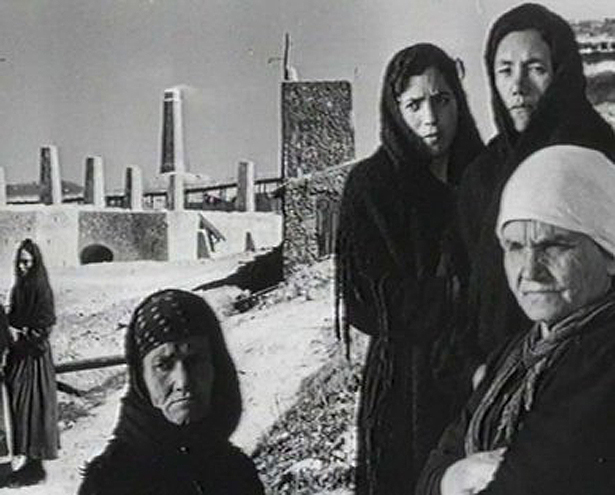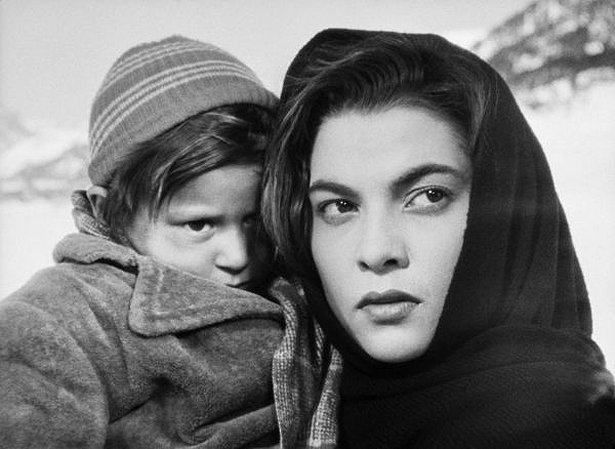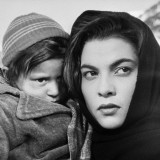Right from the opening scene where you see the village women all veiled in black waiting patiently outside the mine for their husbands who refuse to come up to avoid the mine closing – you see direct similarities with another Nerorealism harbinger – Visconti’s 1948 La terra trema (The Earth Trembles). In the latter, the black veiled women are waiting for their men stranded at sea. Both films offer a great view into the Italian neorealism genre marked by social and economic hardships, use of non-professional actors and scenes shot on location vs. the studio.
 Veiled women patiently waiting for their husbands that are protesting down in the mine
Veiled women patiently waiting for their husbands that are protesting down in the mine
The film is based on Nino Di Maria’s novel Cuori negli abissi and was co-written by Federico Fellini and Tullio Pinelli – a great evidence for Fellini’s first steps in cinema.
What I liked about the film is the twist in Pietor Germi’s style that typically focuses on plots that take place in Sicily – if you look at his seminal works: Divorce, Italian Style (1961) and Seduced and Abandoned (1963). In this film, Germi starts the story in Capodarso, Sicily but follows the villagers in their adventure to find a better life outside Sicily. This premise of uprooting Sicilians and placing them in new and unfamiliar locales such as in the streets of Rome and in the snowy French Alps – creates unlikely combinations. This in turn makes you think about the human spirit: what is uniting vs. what is dividing people.
Throughout the film, you’ll find the villagers singing as a ready respite from despair and the ambiguity of their future. Their old village sing-along unites them and lifts up their spirits immediately.
Germi uses facial expressions to convey a variety of emotions – from being at loss and out of place in the big city, anger for injustices, awe and bewilderment at views of new places, to the glimpse of hope as expressed in the twinkle of a boy’s smile when stopped by French police.
The film boasts a remarkable performance by Raf Valone as Saro the villagers’ leader in their hope expedition and the debut performance of Elena Varzi as Barbara – real-life wife of Raf Valone who passed away last September.
 One of the high moments in the film, emotional interplay of despair and hope
One of the high moments in the film, emotional interplay of despair and hope
The great composer Carlo Rustichelli is blending both village songs and high note violins to extenuate super-charged scenes like when the villagers exhausted on the French alps are stopped by French police.  There is rapid facial expression interplay between the policemen and the tired children and Barbara. Germi cleverly uses the policemen’s faces as rich canvas to paint series of emotions: Initial suspicion, disbelief of the villagers’ long journey that transforms into remorse looking at a boy’s smile – the embodiment of hope.
There is rapid facial expression interplay between the policemen and the tired children and Barbara. Germi cleverly uses the policemen’s faces as rich canvas to paint series of emotions: Initial suspicion, disbelief of the villagers’ long journey that transforms into remorse looking at a boy’s smile – the embodiment of hope.
The film won major awards at the 1st Berlin International Film Festival and 1951 Cannes Film Festival – Palme d’Or.
You can view entire film below (no English subtitles, though), in 20-minute segment each:
[youtube]http://youtu.be/lvM1iSk0oy4[/youtube]

